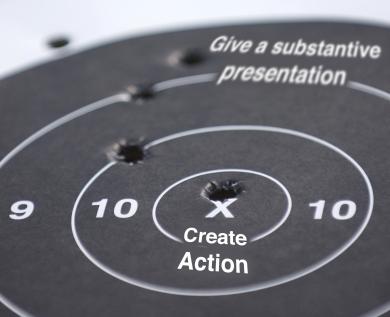
Fundamental objectives are hard — but important to identify

What is your real target for your communication effort? Identify your fundamental communication objectives.
I consulted recently with a couple of very knowledgeable and accomplished scientists about a conference at which they hoped to reach a key audience. They had a wealth of information and details they hoped to communicate with other decision-making professionals — literally reams of rigorous information and science-based recommendations.
One of the first questions I asked was "what do you hope to achieve and, specifically, what do you want people to do as a result of attending your meeting?"
The answer - "our goal is to deliver a substantive presentation."
While substantive presentations may be the means to reach a goal, I would contend that interesting, entertaining, engaging and even substantially strong scientific presentations are NEVER a fundamental goal.
Communication delivery (presentations, brochures, news releases, websites) are not goals/objectives in themselves. We need to define first a fundamental communication goal/objective — what you want your audience to know, feel and/or do. It sounds easy, right? Not always.
Often, as natural resource scientists and administrators with a wealth of technical and policy knowledge in mind, identifying fundamental communication objectives can be more daunting than monitoring breeding habits of a rare, elusive, canopy-dwelling, nocturnal species.
If communication is valuable for you to spend your time (and agency dollars) on, it is important to identify the fundamental communications objectives. Out of a well-honed fundamental objective can emerge the best communication approach — and eventually, perhaps, a substantive presentation.
November 1, 2017
